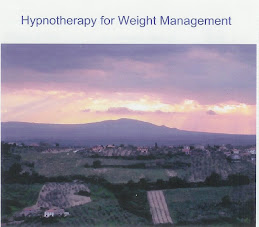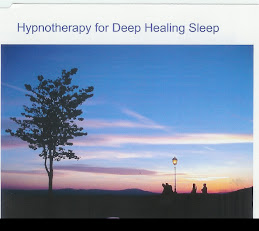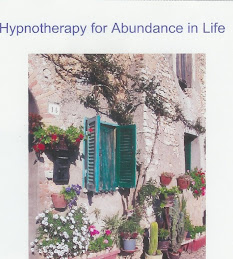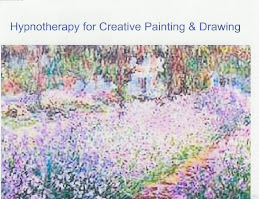How to Be Happy
By Tara Parker-Pope @nytimeswell
Behavioral scientists have spent a lot of time studying what makes us happy (and what doesn’t). We know happiness can predict health and longevity, and happiness scales can be used to measure social progress and the success of public policies. But happiness isn’t something that just happens to you. Everyone has the power to make small changes in our behavior, our surroundings and our relationships that can help set us on course for a happier life.
Mind
Happiness often comes from within. Learn how to tame negative thoughts and approach every day with optimism.
CONQUER NEGATIVE THINKING
All humans have a tendency to be a bit more like Eeyore than Tigger, to ruminate more on bad experiences than positive ones. It’s an evolutionary adaptation — over-learning from the dangerous or hurtful situations we encounter through life (bullying, trauma, betrayal) helps us avoid them in the future and react quickly in a crisis.
But that means you have to work a little harder to train your brain to conquer negative thoughts. Here’s how:
Don’t try to stop negative thoughts. Telling yourself “I have to stop thinking about this,” only makes you think about it more. Instead, own your worries. When you are in a negative cycle, acknowledge it. “I’m worrying about money.” “I’m obsessing about problems at work.”
Treat yourself like a friend. When you are feeling negative about yourself, ask yourself what advice would you give a friend who was down on herself. Now try to apply that advice to you.
Challenge your negative thoughts. Socratic questioning is the process of challenging and changing irrational thoughts. Studies show that this method can reduce depression symptoms. The goal is to get you from a negative mindset (“I’m a failure.”) to a more positive one (“I’ve had a lot of success in my career. This is just one setback that doesn’t reflect on me. I can learn from it and be better.”) Here are some examples of questions you can ask yourself to challenge negative thinking.
First, write down your negative thought, such as “I’m having problems at work and am questioning my abilities.”
Then ask yourself: “What is the evidence for this thought?”
“Am I basing this on facts? Or feelings?”
“Could I be misinterpreting the situation?”
“How might other people view the situation differently?
“How might I view this situation if it happened to someone else?”
The bottom line: Negative thinking happens to all of us, but if we recognize it and challenge that thinking, we are taking a big step toward a happier life.
CONTROLLED BREATHING
Science is just beginning to provide evidence that the benefits of this ancient practice are real. Studies have found, for example, that breathing practices can help reduce symptoms associated with anxiety, insomnia, post-traumatic stress disorder, depression and attention deficit disorder. For centuries yogis have used breath control, or pranayama, to promote concentration and improve vitality. Buddha advocated breath-meditation as a way to reach enlightenment.
Try it.
REWRITE YOUR STORY
Writing about oneself and personal experiences — and then rewriting your story — can lead to behavioral changes and improve happiness. (We already know that expressive writing can improve mood disorders and help reduce symptoms among cancer patients, among other health benefits.)
Some research suggests that writing in a personal journal for 15 minutes a day can lead to a boost in overall happiness and well-being, in part because it allows us to express our emotions, be mindful of our circumstances and resolve inner conflicts. Or you can take the next step and focus on one particular challenge you face, and write and rewrite that story.
We all have a personal narrative that shapes our view of the world and ourselves. But sometimes our inner voice doesn’t get it right. By writing and then editing our own stories, we can change our perceptions of ourselves and identify obstacles that stand in the way of our personal well-being. The process is similar to Socratic questioning (referenced above). Here’s a writing exercise:
Write a brief story about your struggle. I’m having money problems. I am having a hard time making friends in a new city. I’m never going to find love. I’m fighting with my spouse.
Now write a new story from the viewpoint of a neutral observer, or with the kind of encouragement you’d give a friend.
Money is a challenge but you can take steps to get yourself into financial shape.
Everyone struggles in their first year in a new city. Give it some time. Join some groups.
Don’t focus on finding love. Focus on meeting new people and having fun. The rest will follow.
Couples argue. Here’s what your situation looks like to a neutral observer.
Numerous studies show that writing and rewriting your story can move you out of your negative mindset and into a more positive view of life. “The idea here is getting people to come to terms with who they are, where they want to go,” said James Pennebaker, a psychology professor at the University of Texas who has pioneered much of the research on expressive writing. “I think of expressive writing as a life course correction.”
GET MOVING
When people get up and move, even a little, they tend to be happier than when they are still. A study that tracked the movement and moods of cellphone users found that people reported the most happiness if they had been moving in the past 15 minutes than when they had been sitting or lying down. Most of the time it wasn’t rigorous activity but just gentle walking that left them in a good mood. Of course, we don’t know if moving makes you happy or if happy people just move more, but we do know that more activity goes hand-in-hand with better health and greater happiness.
PRACTICE OPTIMISM
Optimism is part genetic, part learned. Even if you were born into a family of gloomy Guses, you can still find your inner ray of sunshine. Optimism doesn’t mean ignoring the reality of a dire situation. After a job loss, for instance, many people may feel defeated and think, “I’ll never recover from this.” An optimist would acknowledge the challenge in a more hopeful way, saying, “This is going to be difficult, but it’s a chance to rethink my life goals and find work that truly makes me happy.”
And thinking positive thoughts and surrounding yourself with positive people really does help. Optimism, like pessimism, can be infectious. So make a point to hang out with optimistic people.
Sunday, December 3, 2017
Tuesday, July 25, 2017
Hypnosis Supperted by Health Experts
Hypnosis works: Insomnia, Gut Troubles, Anxiety, and Pain Relif.
Friday, May 12, 2017
Strategies to Master Mindful Eating
As with any new habit, mindful eating takes practice. One of the ultimate goals of mindful eating is to stop eating when you are comfortably full or satisfied. To help you do this, follow the 13 strategies below next time you eat:
1. Pause before eating and ask yourself, “How hungry am I on a scale of 1 to 10?” One signifies “ravenous” while five is “satisfied” and ten is “sick to your stomach,” you’re so full.
2. Ask yourself, “How much food will fit comfortably in my stomach?” Then eat only that much, not more.
3. Pay close attention to the appearance, aroma, taste and texture of your food; savor each bite. Place your utensil down and sit back in your chair between bites and pay full attention to the flavor and texture of each one as you chew.
4. Take frequent breaks during meals. Take a deep breath and check in with your body to determine how full you are.
5. Chew slowly, mindfully, and thoroughly.
6. Finish chewing one bite of food before scooping another bite onto your fork or spoon. You can slow down, reduce your intake, and better enjoy the taste and experience of your food by paying full attention to one bite at a time.
8. Sip—don’t gulp—your beverage.
9. If you’re sharing your meal with others, engage in conversation with them.
10. Know that this will not be the last time you eat these foods because you can enjoy them again at another meal or snack, especially if you have leftovers.
11. Save leftovers for when you are hungry and need to fuel your body again.
12. If you find yourself continuing to eat once full, ask yourself “Does this food taste as good now that I’m full?”
13. Wait 10 to 15 minutes before going for seconds. You’ll be able to more accurately determine how full you are, since it takes this much time for your stomach to signal your brain.
Final Steps to a Mindful Meal
As soon as you are comfortably full, put down your fork and stop eating. Sit back in your chair and enjoy the pleasant feeling of fullness. Then ask yourself the following questions:
What are you feeling?
Are you disappointed that you feel full?
Are you anxious or uncomfortable that you are not eating but others are?
Is it better to continue eating with others leading you to overeat, and feel guilty because you ate until you were uncomfortable?
Or, is it more pleasurable and rewarding to eat until satisfied, so that you feel content and proud for stopping at a comfortable level of fullness?
Carefully think about and examine how you feel during this experiment. Foster your curiosity about this experience and learn from it. It may help to journal about it, including your answers to the questions above
And remember, practice is key to mastering the art of mindful eating. Eating mindfully takes the “power” away from food and gives it back to its rightful owner: you. It helps you reconnect with the internal signals that enable you to eat normally, lose or maintain a healthy weight, and reach your health goals.
1. Pause before eating and ask yourself, “How hungry am I on a scale of 1 to 10?” One signifies “ravenous” while five is “satisfied” and ten is “sick to your stomach,” you’re so full.
2. Ask yourself, “How much food will fit comfortably in my stomach?” Then eat only that much, not more.
3. Pay close attention to the appearance, aroma, taste and texture of your food; savor each bite. Place your utensil down and sit back in your chair between bites and pay full attention to the flavor and texture of each one as you chew.
4. Take frequent breaks during meals. Take a deep breath and check in with your body to determine how full you are.
5. Chew slowly, mindfully, and thoroughly.
6. Finish chewing one bite of food before scooping another bite onto your fork or spoon. You can slow down, reduce your intake, and better enjoy the taste and experience of your food by paying full attention to one bite at a time.
8. Sip—don’t gulp—your beverage.
9. If you’re sharing your meal with others, engage in conversation with them.
10. Know that this will not be the last time you eat these foods because you can enjoy them again at another meal or snack, especially if you have leftovers.
11. Save leftovers for when you are hungry and need to fuel your body again.
12. If you find yourself continuing to eat once full, ask yourself “Does this food taste as good now that I’m full?”
13. Wait 10 to 15 minutes before going for seconds. You’ll be able to more accurately determine how full you are, since it takes this much time for your stomach to signal your brain.
Final Steps to a Mindful Meal
As soon as you are comfortably full, put down your fork and stop eating. Sit back in your chair and enjoy the pleasant feeling of fullness. Then ask yourself the following questions:
What are you feeling?
Are you disappointed that you feel full?
Are you anxious or uncomfortable that you are not eating but others are?
Is it better to continue eating with others leading you to overeat, and feel guilty because you ate until you were uncomfortable?
Or, is it more pleasurable and rewarding to eat until satisfied, so that you feel content and proud for stopping at a comfortable level of fullness?
Carefully think about and examine how you feel during this experiment. Foster your curiosity about this experience and learn from it. It may help to journal about it, including your answers to the questions above
And remember, practice is key to mastering the art of mindful eating. Eating mindfully takes the “power” away from food and gives it back to its rightful owner: you. It helps you reconnect with the internal signals that enable you to eat normally, lose or maintain a healthy weight, and reach your health goals.
Tuesday, April 11, 2017
Being Mindful with Anger
Excellent New York Times article on Minfulness and Anger. Hypnosis can be an easier way to the same destination as deep meditation. Hypnosis is excellent for Anger management, stress, anxiety and PTSD. Diaphragmatic Breathing, Deep Belly Breathing is essential in emotional mindfulness and getting control of anger feelings. We can be mindful enough to make choices about our behaviors and verbal responses to anger feelings. Anger can be expressed in proactive and beneficial ways, through Assertive Communication for instance. These things can be learned easily and quickly. Hypnosis is Healthy, Natural, and Relaxing.
Anger can be a natural, life-affirming emotion, if you let it be.
Labels:
anger management,
anxiety,
Hyonosis,
Mindfulness,
PTSD.,
stress management
Tuesday, April 4, 2017
Drinking on Anti-Depressants
By STEVEN PETROW DEC. 20, 2016
Credit Tony Cenicola/The New York Times
“So why did you stop drinking?” my friend Brad asked recently when we were out for dinner. “You never seemed to have a drinking problem.”
The question surprised me, coming as it did a full two years after my decision to take a “break” from alcohol. He was scanning the wine list, and I sensed he was hoping I’d share a bottle of French rosé with him. So I decided to tell him the truth.
“To get my depression back under control.”
In my late 50s, my longstanding depression had started to deepen, albeit imperceptibly at first. I continued drinking moderately, a couple of glasses of wine most days of the week, along with a monthly Manhattan.
Then two dark and stormy months really shook me up, leaving me in a black hole of despair as depression closed in. At my first therapy appointment, the psychopharmacologist listened to me attentively, then said bluntly: “Stop drinking for a month.”
The shrink wanted to know whether I was in control of my drinking or my drinking was in control of me. He explained that we become more sensitive to the depressant effects of alcohol as we age, especially in midlife, when our body chemistry changes and we’re more likely to be taking various medications that can interact with alcohol and one another.
On doctor’s orders, I went cold turkey off alcohol. When I returned a month later and volunteered that I hadn’t touched a drink since our last visit, he was satisfied that I didn’t have “an active alcohol problem” and told me I could drink in what he considered moderation: No more than two glasses of wine a day, and never two days in a row. He also suggested I keep a log.
More Americans than ever are taking antidepressants. The prevalence nearly doubled between 1999 and 2012, increasing to 13 percent from 6.9 percent, a study in JAMA found. Antidepressant use increases with age, with more than one in six of those over 60 taking a drug for depression.
Drug companies err on the side of caution, warning those taking the drugs to “avoid alcohol.” Alcohol is itself a depressant and may worsen depression, though few studies have explored the clinical implications of mixing it with antidepressants. Dr. Daniel Hall-Flavin, an associate professor of psychiatry at the Mayo Clinic who studies addiction, said: “While select individuals may be able to have an occasional drink without complications, that cannot be generalized to an entire population, some of whom may have drug interactions.”
Andrew Solomon, a professor of clinical psychology and among the world’s best-known depressives thanks to his book “The Noonday Demon: An Atlas of Depression,” couldn’t provide much more guidance. “It definitely varies by how I’m feeling over all,” he told me when I asked about his personal habits. “When I’m in good spirits — no pun intended — I am easier about this; when I feel more fragile, I’m more cautious.”
“People just don’t know,” said Dr. Richard A. Friedman, a professor of clinical psychiatry and director of the psychopharmacology clinic at Weill Cornell Medicine in New York and occasional contributor to The New York Times. “There simply aren’t any good studies of whether there’s a safe amount to drink while taking antidepressants, which is why you have such variable opinions from doctors, ranging from none to modest, whatever that is.”
Dr. Friedman pointed out one thing we do know: “The risk of alcohol abuse and dependence problems for those who suffer from depression is about double the risk of people who don’t.” And if you have an accompanying psychiatric condition like bipolar disorder, he said, the risk of an alcohol use disorder is six to seven times higher.
He noted that some medications may be more dangerous than others when combined with alcohol. Specifically, he warned me away from Wellbutrin, preferred by many patients because it has virtually no sexual side effects; unfortunately that antidepressant, when combined with alcohol, can increase the likelihood of a seizure. Lexapro, the antidepressant I take, belongs to a widely prescribed class of antidepressants known as selective serotonin reuptake inhibitors and is no better or worse when it comes to drinking than other S.S.R.I.s.
Dr. Friedman added that an older type of antidepressants known as monoamine oxidase inhibitors Dr. Friedman added that an older type of antidepressants known as monoamine oxidase inhibitors, or MAOIs, could be particularly dangerous when combined with alcohol. Alcohol contains variable amounts of tyramine, a natural substance also found in certain foods like aged cheese and cured meats that, when combined with these drugs, could cause blood pressure levels to skyrocket.
So what to do? Dr. Friedman suggested an experiment: Try having one drink a couple of times a week or less. If no problems arise, such as the return of feelings of depression or anxiety, or a disruption in sleep, you can maintain that level of very moderate drinking. Such side effects may become apparent the next day or take days or weeks to develop, he cautions, especially with higher levels of alcohol intake.
“Many people don’t recognize and make those connections,” he said, so they think that they can continue drinking — or drink more. They can’t. The bottom line is that anyone taking an antidepressant should first speak with a doctor before drinking any alcohol.
As for me, my experiment about how much to drink has been unambiguous: Even a half glass of wine opens the trap doors to depression in my head. Abstaining keeps those doors closed, and my depression at bay. At least for now.
Credit Tony Cenicola/The New York Times
“So why did you stop drinking?” my friend Brad asked recently when we were out for dinner. “You never seemed to have a drinking problem.”
The question surprised me, coming as it did a full two years after my decision to take a “break” from alcohol. He was scanning the wine list, and I sensed he was hoping I’d share a bottle of French rosé with him. So I decided to tell him the truth.
“To get my depression back under control.”
In my late 50s, my longstanding depression had started to deepen, albeit imperceptibly at first. I continued drinking moderately, a couple of glasses of wine most days of the week, along with a monthly Manhattan.
Then two dark and stormy months really shook me up, leaving me in a black hole of despair as depression closed in. At my first therapy appointment, the psychopharmacologist listened to me attentively, then said bluntly: “Stop drinking for a month.”
The shrink wanted to know whether I was in control of my drinking or my drinking was in control of me. He explained that we become more sensitive to the depressant effects of alcohol as we age, especially in midlife, when our body chemistry changes and we’re more likely to be taking various medications that can interact with alcohol and one another.
On doctor’s orders, I went cold turkey off alcohol. When I returned a month later and volunteered that I hadn’t touched a drink since our last visit, he was satisfied that I didn’t have “an active alcohol problem” and told me I could drink in what he considered moderation: No more than two glasses of wine a day, and never two days in a row. He also suggested I keep a log.
More Americans than ever are taking antidepressants. The prevalence nearly doubled between 1999 and 2012, increasing to 13 percent from 6.9 percent, a study in JAMA found. Antidepressant use increases with age, with more than one in six of those over 60 taking a drug for depression.
Drug companies err on the side of caution, warning those taking the drugs to “avoid alcohol.” Alcohol is itself a depressant and may worsen depression, though few studies have explored the clinical implications of mixing it with antidepressants. Dr. Daniel Hall-Flavin, an associate professor of psychiatry at the Mayo Clinic who studies addiction, said: “While select individuals may be able to have an occasional drink without complications, that cannot be generalized to an entire population, some of whom may have drug interactions.”
Andrew Solomon, a professor of clinical psychology and among the world’s best-known depressives thanks to his book “The Noonday Demon: An Atlas of Depression,” couldn’t provide much more guidance. “It definitely varies by how I’m feeling over all,” he told me when I asked about his personal habits. “When I’m in good spirits — no pun intended — I am easier about this; when I feel more fragile, I’m more cautious.”
“People just don’t know,” said Dr. Richard A. Friedman, a professor of clinical psychiatry and director of the psychopharmacology clinic at Weill Cornell Medicine in New York and occasional contributor to The New York Times. “There simply aren’t any good studies of whether there’s a safe amount to drink while taking antidepressants, which is why you have such variable opinions from doctors, ranging from none to modest, whatever that is.”
Dr. Friedman pointed out one thing we do know: “The risk of alcohol abuse and dependence problems for those who suffer from depression is about double the risk of people who don’t.” And if you have an accompanying psychiatric condition like bipolar disorder, he said, the risk of an alcohol use disorder is six to seven times higher.
He noted that some medications may be more dangerous than others when combined with alcohol. Specifically, he warned me away from Wellbutrin, preferred by many patients because it has virtually no sexual side effects; unfortunately that antidepressant, when combined with alcohol, can increase the likelihood of a seizure. Lexapro, the antidepressant I take, belongs to a widely prescribed class of antidepressants known as selective serotonin reuptake inhibitors and is no better or worse when it comes to drinking than other S.S.R.I.s.
Dr. Friedman added that an older type of antidepressants known as monoamine oxidase inhibitors Dr. Friedman added that an older type of antidepressants known as monoamine oxidase inhibitors, or MAOIs, could be particularly dangerous when combined with alcohol. Alcohol contains variable amounts of tyramine, a natural substance also found in certain foods like aged cheese and cured meats that, when combined with these drugs, could cause blood pressure levels to skyrocket.
So what to do? Dr. Friedman suggested an experiment: Try having one drink a couple of times a week or less. If no problems arise, such as the return of feelings of depression or anxiety, or a disruption in sleep, you can maintain that level of very moderate drinking. Such side effects may become apparent the next day or take days or weeks to develop, he cautions, especially with higher levels of alcohol intake.
“Many people don’t recognize and make those connections,” he said, so they think that they can continue drinking — or drink more. They can’t. The bottom line is that anyone taking an antidepressant should first speak with a doctor before drinking any alcohol.
As for me, my experiment about how much to drink has been unambiguous: Even a half glass of wine opens the trap doors to depression in my head. Abstaining keeps those doors closed, and my depression at bay. At least for now.
Labels:
Antidepressants,
depression,
drinking alcohol,
ETOH,
substance abuse
Subscribe to:
Posts (Atom)



















